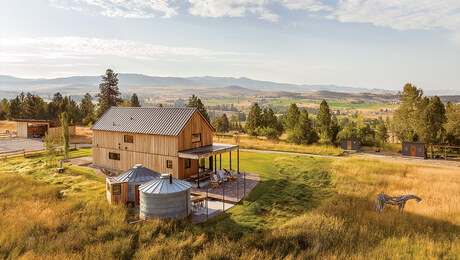Building Science for the Rest of Us
7 basic principles to make homes safe, durable, and energy efficient.

Synopsis: A. Tamasin Sterner delivers seven basic principles to make homes safe, durable, and energy efficient in “Building Science for the Rest of Us.” The first principle is comfort, and there are four primary factors affecting human comfort: air temperature, relative humidity, radiant temperature, and air movement. Those four factors affect not only comfort but the efficiency and longevity of a home. Understanding that heat moves from warmer spaces to colder spaces and that moisture gravitates toward dry spaces, drive the need for sealing air leaks, using vapor barriers, and proper use of insulation. Any changes that are made in one area must be thought through in terms of how they may affect other areas of the house.
For more than 30 years, I’ve worked with dozens of weatherization agencies and hundreds of weatherization workers. Among other things, my firm performs quality-control audits following utility-sponsored weatherization work. The work is meant to lower utility costs for those who can’t afford their utility bills.
Once the weatherization work is done, the agency or utility that contracted the work hires me to make sure everything was done correctly. I also train weatherization workers and their supervisors in building science, air-sealing, and safe operation of combustion appliances. Both parts of my job give me the opportunity to work with all kinds of people and in all kinds of residential buildings.
Throughout my career, I’ve seen a gradual improvement in people’s understanding of building science, but there is still plenty of misunderstanding about how residential buildings work. Many of the building professionals I talk to still say, “A house has to breathe,” when they’re asked to make air-sealing improvements or upgrade insulation and mechanical systems. They sometimes argue that air-sealing and insulation upgrades are harmful to the house and its occupants. They want to rely on uncontrolled air leaks to keep the house dry and ventilated. Unfortunately, that outdated thinking makes people uncomfortable and wastes energy.
The issues related to building science and building safety are only going to get more important. Newer homes and energy-upgraded homes are less forgiving when it comes to moisture and indoor air pollutants.
What follows is a list of basic building-science principles and what they mean for occupant comfort, building longevity, and energy efficiency.
1. Comfort involves more than air temperature
There are four primary factors affecting human comfort: air temperature, relative humidity, radiant temperature, and air movement. Most people are comfortable when the air temperature is between 70°F and 80°F and when the relative humidity is between 30% and 70%. Air movement is less cut-and-dried. A slight breeze from a fan on a hot, sunny day can make you feel more comfortable, but a draft in your living room on a cold day will have you running to the thermostat.
Radiant temperature is best explained with a pair of examples. If you sit next to a single-pane window on a cold day, you’ll likely feel cold, even if the air temperature is 75°F. Your body heat radiates from your skin to the cooler surface, and that cools you down. On hot days, the ceiling under a poorly insulated attic radiates heat, making you feel hot, even when the air temperature should be comfortable.
For more photos and basic building-science principles, click the View PDF button below.
Fine Homebuilding Recommended Products
Fine Homebuilding receives a commission for items purchased through links on this site, including Amazon Associates and other affiliate advertising programs.

Disposable Suit

Foam Gun

Utility Knife

























